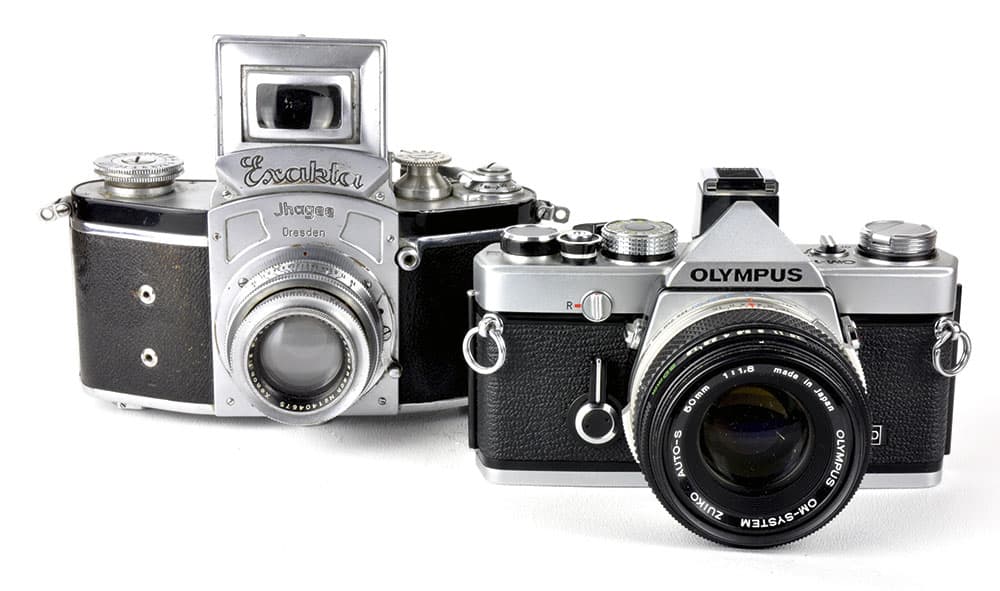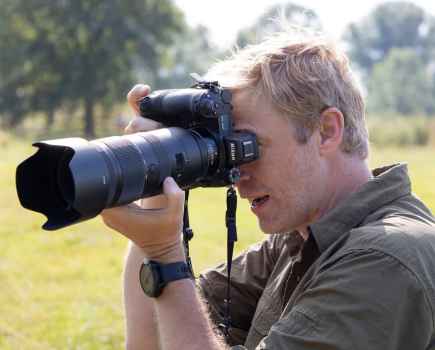
Photographica is attended by collectors from across the UK and around the world
It might come as a surprise to discover there are people out there who buy cameras and never use them. They pay good money for such pieces – often more than they can actually afford – then they put them on a shelf and look at them. These people are camera collectors and if the above description applies to you, there’s only one place to be on 21 May: Photographica 2017.
Andy Gillett is Chairman of the Photographic Collectors’ Club of Great Britain (PCCGB), which organises Photographica. According to him, the collecting scene is beginning to change and Photographica is changing with it.
‘Photographica has been an annual event for more than 30 years, attracting visitors from the UK, Europe and even America,’ he says. ‘In its early days, it was attended by collectors who are only interested in a camera if it was made before the Second World War, or better still, the First World War. Lately, however, we have seen a growing influx of visitors who are equally interested in film cameras from the days just before digital, which they buy to use.
‘That said, if you’re a dedicated collector of old-school models, don’t despair. This year’s show will still major on traditional collectors’ items, wonderfully old, obscure, peculiar and rare cameras – many dating back to the late 1800s. But side by side with these, there will be a good representation of cameras from the 1960s, 1970s and 1980s, which will please the growing band of younger collector-users.’
So what kind of cameras are you likely to encounter on more than 100 tables at this year’s Photographica? The answer is anything and everything.

Who says cameras have to be black? This is the six-colour range of Coronet Midgets, made in the 1930s
Wood and brass
Dating from the late 1800s, these are usually made from mahogany, or sometimes teak, with leather bellows connecting the rear plate holder to a front panel. This holds a beautiful brass-bound lens, sometimes with a shutter, often without. They are collected for the sheer beauty of their craftsmanship,and English names such as Sanderson and Thornton-Pickard dominate the field.
Single lens reflexes
These cross the boundary between collectable and usable cameras. Collectors seek out older plate camera models from manufacturers such as Thornton-Pickard and Ensign, or early 35mm SLRs such as the German Kine Exakta and Russian Sport. Users will be going more for 1970s Japanese classics such as the Canon AE-1, Olympus OM-1 and Pentax ME Super.
Twin lens reflexes
Collectable plate camera TLRs are rare and expensive. But from 1928 onwards, with the launch of the original Rolleiflex, rollfilm TLRs proliferated from manufacturers around the world. Since most take 120 rollfilm, they make a great introduction to medium-format photography for the user. The various types and manufacturers are also avidly sought by collectors. Rolleiflex cameras stand at the top of the market, but more reasonably priced TLRs can be found in the likes of the Voigtländer Brillant (often mistakenly called the Brilliant) series of TLRs from Germany, the Microcord from England, and even the Chinese Seagull range.
Miniatures and subminiatures
The most famous subminiature is the Minox – the one James Bond keeps in his pocket to photograph secret plans. They are highly collectable, and usable, too, thanks to the current availability of Minox film. Cameras for 16mm film are also popular with collectors. In the 1950s and 1960s, nearly every type of camera was made to take 16mm: SLRs, TLRs, viewfinder, panoramic and stereo. Today, these are more collectable than usable.
Panoramic cameras
Look out for swing-lens cameras, in which the lens swings in an arc during exposure, projecting and building up a super-wide image on film stretched around a semi- circular path. Names to look for include the Kodak Panoram made in the early 20th century for rollfilm, or the Russian FT-2 and Horizont made in the late 1950s and early 1960s for 35mm.
Stereo cameras
A stereo camera shoots two images at the same time, through two lenses, spaced apart by the distance between human eyes. When viewed in a stereo viewer, with each eye seeing a different image, the illusion of depth is achieved. Collectors might look for early stereo cameras, such as the French Monobloc from 1915, which took glass plates. Cameras from the 1950s, like the American Stereo Realist or the English Wray Stereo Graphic, use 35mm film, making them both collectable and usable today.
Peculiar cameras
Not every camera in the history of photography kept to what we might call a traditional style and shape. The collecting scene is rife with cameras whose lenses aren’t where they ought to be: cameras disguised as everything from watches to guns; cameras that use mirrors in strange and complicated ways; cameras produced in every colour of the rainbow; and many other weird, wonderful and strange designs that defy categorisation. They might not be very usable today, but for many, such cameras are what collecting is all about.

Kine Exakta (left), the first 35mm SLR and a collector’s item today, with a more usable Olympus OM-1n
Photographica 2017 is on 21 May, from 10am-4pm at the Royal Horticultural Society’s Lindley Hall, 80 Vincent Square, London SW1P 2PE. Admission is £5, free to PCCGB members. The Photographic Collector’s Club of Great Britain issues three magazines and six newsletters a year, and holds meetings where you can meet like-minded collectors from all over the UK. For more details, call 01920 82161, or visit www.pccgb.net








